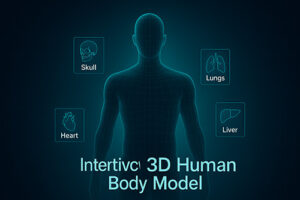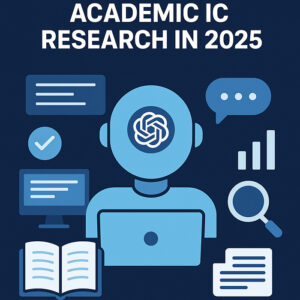Unlocking Insights: A Beginner’s Guide to Data Mining
Introduction
Data mining is like digging for gold in a vast digital landscape. Ever wondered how Netflix knows your next favorite show or how Amazon recommends just what you need? The answer lies in data mining—the art and science of extracting valuable insights from large datasets.
In our increasingly digital world, we generate an astonishing amount of data every day—from social media posts and online purchases to fitness tracker statistics and web browsing history. Hidden within this ocean of information are patterns, trends, and insights that can transform businesses and improve our daily lives. Data mining is the process that helps us discover these hidden treasures.
This guide will walk you through the fundamentals of data mining in simple, straightforward terms, providing you with the knowledge to begin your data mining journey.
What is Data Mining and Why is it Crucial for Businesses?
Defining Data Mining
Data mining is the process of discovering patterns, correlations, anomalies, and meaningful information from large datasets using various computational techniques. Think of it as having a conversation with your data, asking it questions, and finding answers that might not be immediately obvious.
Unlike simple data analysis, which often looks at what happened in the past, data mining goes deeper by:
- Identifying hidden patterns that might not be visible through standard reporting
- Predicting future trends and behaviors based on historical data
- Discovering connections between seemingly unrelated variables
- Automatically identifying anomalies or outliers in datasets
The Business Value of Data Mining
For businesses, data mining isn’t just a technical exercise—it’s a strategic necessity. Here’s why it has become crucial:
Informed Decision Making: Rather than relying on gut feelings or limited information, data mining helps businesses make decisions based on comprehensive analysis of all available data. For instance, a retail chain might use data mining to determine the optimal location for a new store by analyzing demographic data, traffic patterns, competitor locations, and consumer behavior.
Customer Understanding: By analyzing customer data, businesses can develop a deeper understanding of who their customers are, what they want, and how they behave. This knowledge enables more personalized marketing, improved customer service, and product development aligned with customer needs.
Operational Efficiency: Data mining can identify inefficiencies in business processes. For example, a manufacturing company might use data mining to detect patterns in equipment failures, allowing them to implement preventive maintenance before costly breakdowns occur.
Risk Management: Financial institutions use data mining to detect fraudulent transactions by identifying unusual patterns that might indicate criminal activity. Insurance companies analyze claim patterns to identify potentially fraudulent claims.
Competitive Advantage: In today’s data-driven world, organizations that effectively leverage their data often outperform those that don’t. Data mining provides insights that can lead to innovation, better customer experiences, and more efficient operations—all of which contribute to competitive advantage.
Practical Examples of Data Mining You Encounter Every Day
Data mining shapes our daily experiences in ways we might not even notice. Here are some common examples:
Recommendation Systems
When you see “Customers who bought this also bought…” on Amazon or “Because you watched…” on Netflix, you’re experiencing the results of collaborative filtering—a data mining technique that identifies patterns in user preferences.
These systems analyze vast amounts of user data to find similarities between users or items. For example, if many users who enjoyed “Stranger Things” also liked “Dark,” Netflix might recommend “Dark” to a new viewer who just finished “Stranger Things.”
Fraud Detection
When your credit card company calls to verify a suspicious transaction, they’re using data mining algorithms that have learned to identify unusual patterns in spending behavior. These systems analyze factors such as:
- Geographic location of transactions
- Transaction amounts
- Types of merchants
- Timing and frequency of purchases
If your card is suddenly used for a large purchase in a country you’ve never visited, the system flags this as potentially fraudulent.
Search Engine Optimization
Search engines use sophisticated data mining algorithms to determine which web pages to show for specific search queries. These algorithms analyze hundreds of factors, including:
- Relevance of content to the search query
- User engagement metrics (time on page, bounce rate)
- Link patterns across the web
- User search history and preferences
The goal is to predict which results will be most useful to the user based on patterns in past search behavior.
Healthcare Diagnostics
Medical professionals increasingly use data mining to improve diagnosis and treatment. For example:
- Analyzing patterns in patient symptoms, test results, and medical histories to aid in diagnosis
- Identifying patients at high risk for certain conditions based on demographic and lifestyle factors
- Optimizing treatment plans based on outcomes for similar patients
Social Media Analysis
Social media platforms use data mining to:
- Determine which posts to show in your feed
- Suggest new connections or accounts to follow
- Target advertisements based on your interests and behavior
- Detect trends and viral content
Step-by-Step Methods for Performing Basic Data Mining Tasks
Data mining follows a structured process that transforms raw data into actionable insights. Here’s a simplified step-by-step approach that beginners can follow:
1. Define the Objective
Before diving into the data, clearly define what you’re trying to accomplish. Are you trying to:
- Predict customer churn?
- Identify high-value customer segments?
- Detect fraudulent transactions?
- Optimize inventory levels?
Having a clear objective helps you focus your efforts and select the appropriate techniques. For example, if you want to predict which customers might cancel their subscription, you would approach the problem differently than if you were trying to identify groups of similar customers.
2. Collect and Prepare Data
Data mining begins with data—the more relevant data you have, the better your results will likely be. However, quality is just as important as quantity.
Data Collection: Gather data from relevant sources such as:
- Customer relationship management (CRM) systems
- Transaction databases
- Website analytics
- Survey responses
- Public data sources
Data Cleaning: Raw data is rarely ready for analysis. You’ll need to:
- Handle missing values (either by filling them in or removing those records)
- Fix inconsistencies (like different date formats)
- Remove duplicates
- Correct errors
Data Transformation: Transform the data into a format suitable for analysis:
- Normalize numerical values to bring different variables to similar scales
- Convert categorical variables into numerical format (one-hot encoding)
- Create derived variables that might be more predictive than raw values
For example, rather than using a customer’s age directly, you might create age ranges (18-24, 25-34, etc.) that better relate to purchasing behavior.
3. Explore the Data
Before applying complex algorithms, take time to understand your data through exploration:
- Calculate summary statistics (mean, median, standard deviation)
- Visualize distributions using histograms and box plots
- Look for correlations between variables
- Identify outliers
This exploratory phase often reveals insights on its own and helps guide your more advanced analysis.
4. Select the Right Data Mining Techniques
Different problems require different approaches. Here are some common data mining techniques and when to use them:
Classification: Used when you want to categorize items into predefined groups. Examples include:
- Determining whether an email is spam or not
- Predicting whether a loan applicant will default
- Identifying the species of a plant based on its characteristics
Clustering: Used to group similar items together when you don’t have predefined categories. Applications include:
- Customer segmentation
- Document categorization
- Identifying groups of products that are often purchased together
Association Rule Mining: Used to discover relationships between variables. Common applications:
- Market basket analysis (“customers who buy X also buy Y”)
- Website navigation analysis
- Cross-selling recommendations
Regression: Used to predict a continuous value rather than a category. Examples include:
- Forecasting sales for the next quarter
- Predicting house prices
- Estimating customer lifetime value
5. Build and Test Models
Once you’ve selected your techniques, it’s time to build your models:
Split Your Data: Divide your dataset into:
- Training data (used to build the model)
- Testing data (used to evaluate how well the model performs on new data)
Apply Algorithms: Use appropriate data mining algorithms to build your models. For a beginner, this might involve using existing tools and libraries rather than coding from scratch.
Evaluate Performance: Assess how well your models perform using metrics like:
- Accuracy, precision, and recall (for classification)
- Mean squared error (for regression)
- Silhouette score (for clustering)
Refine Models: Based on performance, refine your models by:
- Adjusting parameters
- Trying different algorithms
- Including or excluding features
- Collecting more data
6. Deploy and Monitor
Once you’re satisfied with your model’s performance:
Implementation: Put your model into production where it can generate insights or make predictions on new data.
Monitoring: Continuously monitor your model’s performance, as its accuracy may deteriorate over time as patterns in the data change.
Iteration: Periodically update your models to incorporate new data and adapt to changing conditions.
Essential Tools and Technologies that Simplify the Process
The right tools can make data mining more accessible and efficient. Here are some essential tools for beginners:
Programming Languages and Libraries
Python: Perhaps the most popular language for data mining due to its simplicity and powerful libraries:
- Pandas for data manipulation
- NumPy for numerical operations
- Scikit-learn for machine learning algorithms
- Matplotlib and Seaborn for visualization
- NLTK or spaCy for text mining
R: Particularly strong for statistical analysis and visualization:
- tidyverse for data manipulation and visualization
- caret for machine learning
- arules for association rule mining
Data Mining Software
For those who prefer graphical interfaces over coding:
RapidMiner: A comprehensive platform with a visual workflow designer that allows you to build data mining processes without writing code.
KNIME: An open-source platform that enables you to create data flows, execute selected analysis steps, and visualize results.
Weka: An open-source collection of machine learning algorithms for data mining tasks, with tools for data preparation, classification, regression, clustering, association rules, and visualization.
Cloud-Based Services
Cloud providers offer data mining capabilities that scale with your needs:
Amazon SageMaker: Provides tools to build, train, and deploy machine learning models at scale.
Google Cloud AutoML: Allows you to build custom machine learning models with minimal expertise.
Microsoft Azure Machine Learning: Offers a cloud-based environment for developing, training, testing, and deploying models.
Database and Big Data Technologies
For handling large volumes of data:
SQL Databases: Traditional relational databases like MySQL, PostgreSQL, or SQL Server provide functions for basic data mining tasks.
NoSQL Databases: MongoDB, Cassandra, and others can handle unstructured data more efficiently than relational databases.
Hadoop and Spark: For very large datasets, these distributed computing frameworks allow processing across multiple computers.
How Data Mining Can Give You a Competitive Edge in Your Industry
Data mining isn’t just for tech giants—organizations of all sizes across various industries can gain significant advantages from it. Here’s how data mining can provide a competitive edge in different sectors:
Retail and E-commerce
Customer Segmentation: Identify distinct customer groups based on purchasing behavior, allowing for targeted marketing campaigns that speak directly to each segment’s needs and preferences.
Demand Forecasting: Predict future demand for products, helping optimize inventory levels and reduce both stockouts and excess inventory costs.
Price Optimization: Determine the optimal price points for products to maximize revenue while remaining competitive.
Personalization: Create personalized shopping experiences by recommending products based on individual customer preferences and behavior.
Financial Services
Credit Scoring: Develop more accurate models to assess creditworthiness, potentially expanding your customer base while managing risk.
Fraud Detection: Identify suspicious patterns in transaction data to prevent fraudulent activities before they cause financial losses.
Customer Retention: Predict which customers are likely to leave and develop targeted retention strategies to keep them.
Investment Analysis: Identify patterns in market data to inform investment decisions and portfolio management.
Healthcare
Disease Prediction: Identify patients at high risk for certain conditions, enabling earlier intervention and preventive care.
Treatment Optimization: Analyze treatment outcomes to determine the most effective approaches for specific patient profiles.
Resource Allocation: Predict patient admission rates and resource needs to optimize staffing and equipment utilization.
Claims Analysis: Identify patterns in insurance claims to detect fraud and improve the efficiency of the claims process.
Manufacturing
Predictive Maintenance: Analyze equipment sensor data to predict when maintenance will be needed, reducing downtime and repair costs.
Quality Control: Identify factors that contribute to defects, allowing for process improvements that enhance product quality.
Supply Chain Optimization: Analyze supplier performance, transportation costs, and inventory levels to optimize the supply chain.
Marketing
Campaign Optimization: Analyze the performance of marketing campaigns to identify what works best for different customer segments.
Customer Journey Analysis: Map the customer journey to identify key touchpoints and opportunities for improving the customer experience.
Sentiment Analysis: Monitor social media and customer feedback to understand public perception of your brand and products.
Getting Started with Your Own Data Mining Initiative
Ready to apply data mining to your own business challenges? Here’s how to begin:
Start Small: Choose a specific, well-defined problem where data mining could provide value. Success with a small project builds momentum and support for larger initiatives.
Assess Data Availability: Evaluate what data you already have and what additional data you might need. Consider both internal and external data sources.
Build Skills: Invest in training for your team or consider partnering with data mining experts. Many online courses and resources can help build foundational knowledge.
Choose the Right Tools: Select tools that match your team’s skill level and the complexity of your problem. Consider starting with user-friendly platforms before investing in more advanced solutions.
Focus on Business Value: Always tie your data mining efforts back to business outcomes. The insights you generate should lead to actionable decisions that improve performance.
Conclusion
Data mining is no longer the exclusive domain of data scientists and tech companies. With the right approach and tools, businesses of all sizes can unlock the value hidden in their data.
By systematically collecting, analyzing, and acting on the insights derived from your data, you can make more informed decisions, better understand your customers, optimize your operations, and ultimately gain a significant competitive advantage.
As you begin your data mining journey, remember that the goal isn’t just to find interesting patterns—it’s to discover insights that drive meaningful action and create tangible business value. Start small, learn continuously, and gradually expand your data mining capabilities as you see results.
The organizations that thrive in today’s data-rich environment will be those that not only collect data but transform it into actionable intelligence. With the foundations provided in this guide, you’re now equipped to begin that transformation for your own business.
Additional Resources
For those looking to deepen their understanding of data mining, here are some valuable resources:
Books:
- “Data Mining: Concepts and Techniques” by Jiawei Han, Micheline Kamber, and Jian Pei
- “Data Science for Business” by Foster Provost and Tom Fawcett
- “Python for Data Analysis” by Wes McKinney
Online Courses:
- Coursera: “Data Mining Specialization” by University of Illinois
- edX: “Data Science and Machine Learning Essentials”
- Udemy: “Data Mining with Python: Real-Life Data Science Exercises”
Communities and Forums:
- Kaggle: A platform for data science competitions with a wealth of datasets and tutorials
- Stack Overflow: For technical questions related to data mining tools and techniques
- Data Science Stack Exchange: A question and answer site for data science professionals and enthusiasts
Remember, data mining is both a science and an art. The technical skills matter, but equally important is the ability to ask the right questions and interpret results in the context of your specific business environment. Happy mining!









